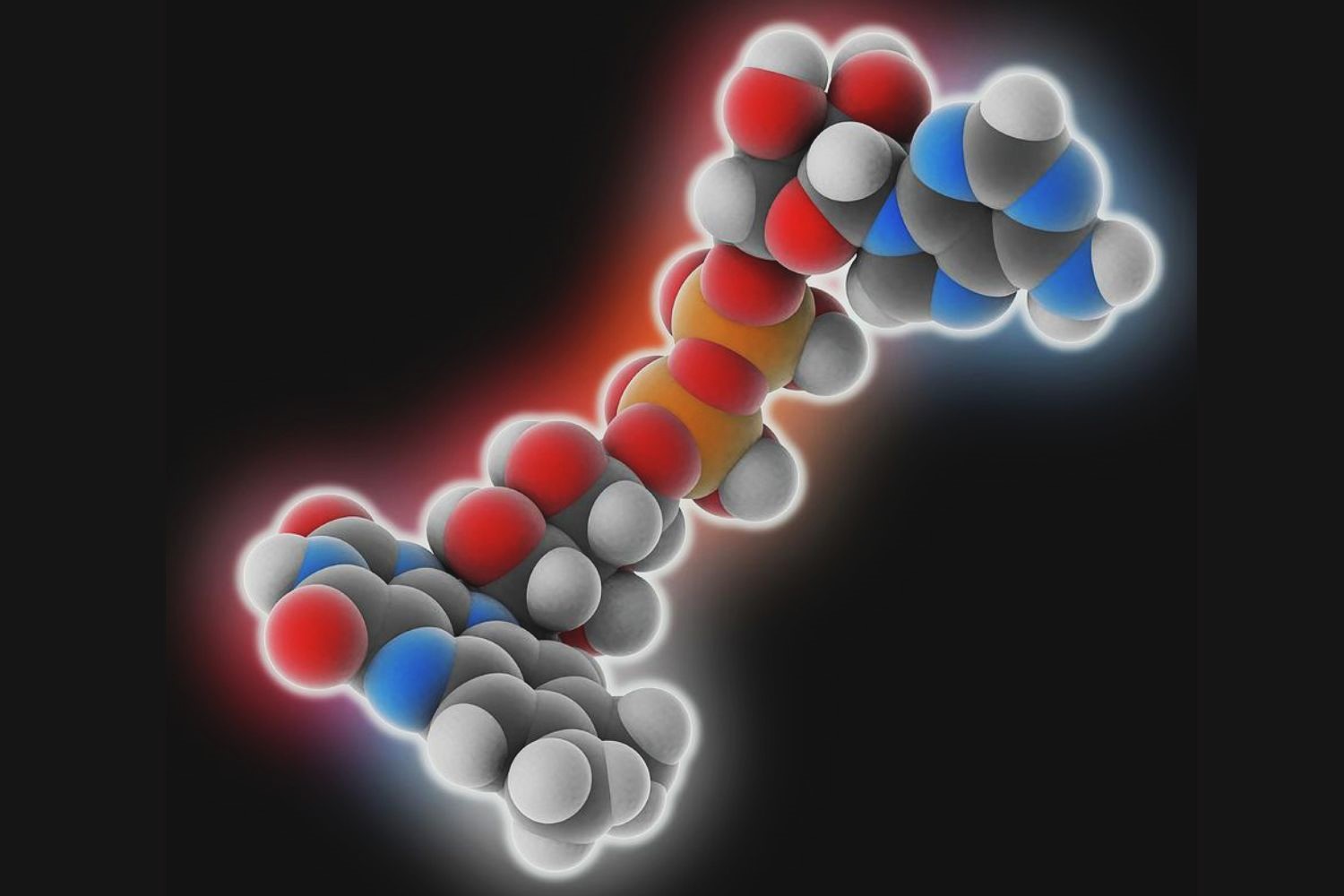
Flavin Adenine Dinucleotide (FAD) is a vital coenzyme found in various metabolic processes. FAD plays a crucial role in cellular respiration, acting as an electron carrier in the Krebs cycle. This molecule helps convert food into energy, making it essential for life. FAD is derived from riboflavin, also known as vitamin B2, which is found in foods like eggs, milk, and green vegetables. Without FAD, our bodies wouldn't efficiently produce ATP, the energy currency of cells. Understanding FAD can provide insights into how our bodies generate energy and maintain overall health. Let's dive into 40 fascinating facts about this indispensable molecule.
Key Takeaways:
- Flavin Adenine Dinucleotide (FAD) is like a superhero coenzyme that helps our bodies produce energy from food, supports metabolism, and protects us from harmful substances. It's like the energy booster for our cells!
- FAD isn't just important for energy, it also plays a big role in keeping us healthy. It helps with things like preventing anemia, supporting our immune system, and even protecting our skin. It's like a health guardian inside our bodies!
What is Flavin Adenine Dinucleotide (FAD)?
Flavin Adenine Dinucleotide (FAD) is a crucial coenzyme in various biological processes. It plays a significant role in metabolism, energy production, and cellular respiration. Let's dive into some fascinating facts about FAD.
- FAD is a redox-active coenzyme associated with various enzymes, known as flavoproteins.
- It exists in two forms: oxidized (FAD) and reduced (FADH2).
- FAD is synthesized from riboflavin (vitamin B2), which is essential for its production.
- It acts as an electron carrier in the electron transport chain, a key component of cellular respiration.
- FADH2, the reduced form, donates electrons to the electron transport chain, helping generate ATP.
- The conversion of FAD to FADH2 occurs during the Krebs cycle, also known as the citric acid cycle.
- FAD is involved in the oxidation of fatty acids, aiding in energy production from fats.
- It plays a role in the metabolism of amino acids, particularly in the breakdown of certain amino acids.
- FAD is crucial for the function of the enzyme succinate dehydrogenase, which is part of both the Krebs cycle and the electron transport chain.
- It helps in the detoxification of drugs and other harmful substances in the liver.
FAD in Cellular Respiration
Cellular respiration is the process by which cells produce energy. FAD plays a pivotal role in this process, particularly in the electron transport chain and the Krebs cycle.
- FADH2 produced in the Krebs cycle enters the electron transport chain at Complex II.
- Each FADH2 molecule can generate approximately 1.5 ATP molecules.
- FAD is less efficient than NAD+ in ATP production, as NADH generates about 2.5 ATP molecules.
- The electron transport chain relies on FADH2 to maintain the flow of electrons and produce energy.
- FADH2 contributes to the proton gradient across the inner mitochondrial membrane, essential for ATP synthesis.
- The regeneration of FAD from FADH2 is crucial for the continuous operation of the Krebs cycle.
- FAD is also involved in the oxidative phosphorylation process, where ATP is produced from ADP.
- The role of FAD in cellular respiration highlights its importance in energy metabolism and overall cellular function.
FAD in Metabolism
Metabolism encompasses all chemical reactions within the body, and FAD is a key player in many of these processes.
- FAD is involved in the oxidation-reduction reactions that are vital for metabolic pathways.
- It aids in the catabolism of carbohydrates, fats, and proteins, converting them into usable energy.
- FAD-dependent enzymes are crucial for the beta-oxidation of fatty acids, breaking down fats into acetyl-CoA.
- It helps in the dehydrogenation of succinate to fumarate in the Krebs cycle.
- FAD is essential for the function of the enzyme acyl-CoA dehydrogenase, which is involved in fatty acid metabolism.
- It plays a role in the metabolism of purines and pyrimidines, the building blocks of DNA and RNA.
- FAD is necessary for the activity of the enzyme glutathione reductase, which helps protect cells from oxidative stress.
- It is involved in the synthesis of certain neurotransmitters, such as dopamine and serotonin.
- FAD helps in the conversion of tryptophan to niacin (vitamin B3), an important process for maintaining cellular health.
- The role of FAD in metabolism underscores its importance in maintaining overall health and energy balance.
FAD in Health and Disease
FAD's role extends beyond metabolism and energy production. It also has implications for health and disease.
- Deficiency in riboflavin can lead to reduced levels of FAD, affecting various metabolic processes.
- Riboflavin deficiency can cause symptoms such as fatigue, anemia, and skin disorders.
- FAD is being studied for its potential role in neurodegenerative diseases like Parkinson's and Alzheimer's.
- Abnormalities in FAD-dependent enzymes can lead to metabolic disorders, such as multiple acyl-CoA dehydrogenase deficiency (MADD).
- FAD is involved in the body's response to oxidative stress, helping protect cells from damage.
- It plays a role in the immune system, supporting the function of immune cells.
- FAD is being researched for its potential in cancer treatment, as it is involved in cellular growth and proliferation.
- It may have a role in aging, as oxidative stress and mitochondrial function are linked to the aging process.
- FAD is essential for maintaining healthy skin, as it supports cellular repair and regeneration.
- It is involved in the production of red blood cells, helping prevent anemia.
- FAD supports cardiovascular health by aiding in the metabolism of homocysteine, an amino acid linked to heart disease.
- The wide-ranging roles of FAD in health and disease highlight its importance in maintaining overall well-being.
The Final Word on FAD
Flavin Adenine Dinucleotide (FAD) plays a crucial role in our bodies. It's a coenzyme found in various metabolic processes, helping convert food into energy. Without FAD, cells couldn't perform essential functions. This molecule is involved in redox reactions, acting as an electron carrier. It's vital for the Krebs cycle, which generates ATP, the energy currency of cells.
FAD also contributes to the breakdown of fats and amino acids. It's found in every living cell, highlighting its importance. Understanding FAD can lead to better insights into metabolic disorders and potential treatments. This tiny molecule has a big impact on our health and well-being.
So, next time you think about energy and metabolism, remember FAD's significant role. It's a small but mighty player in the complex world of biochemistry.
Frequently Asked Questions
Was this page helpful?
Our commitment to delivering trustworthy and engaging content is at the heart of what we do. Each fact on our site is contributed by real users like you, bringing a wealth of diverse insights and information. To ensure the highest standards of accuracy and reliability, our dedicated editors meticulously review each submission. This process guarantees that the facts we share are not only fascinating but also credible. Trust in our commitment to quality and authenticity as you explore and learn with us.


